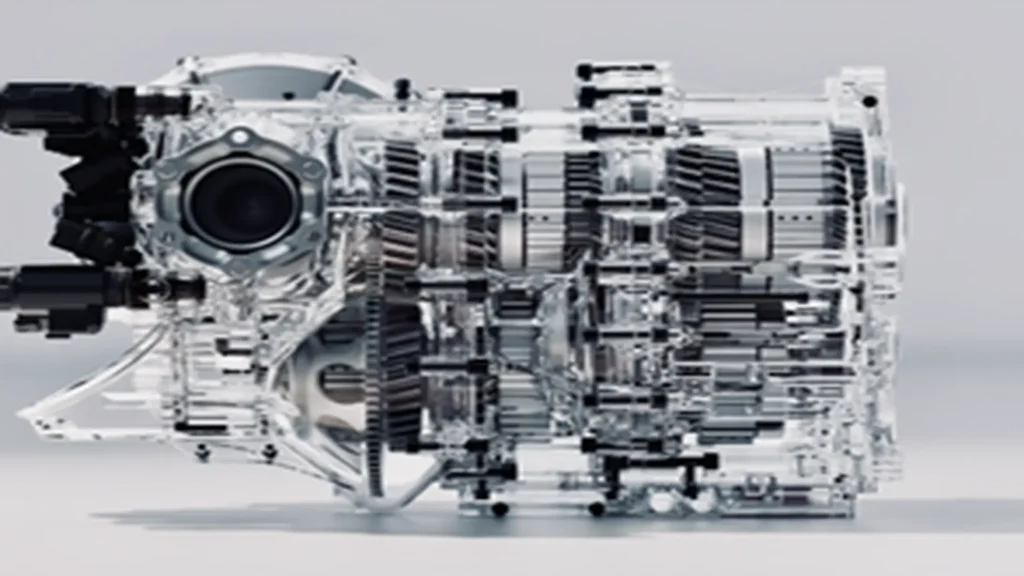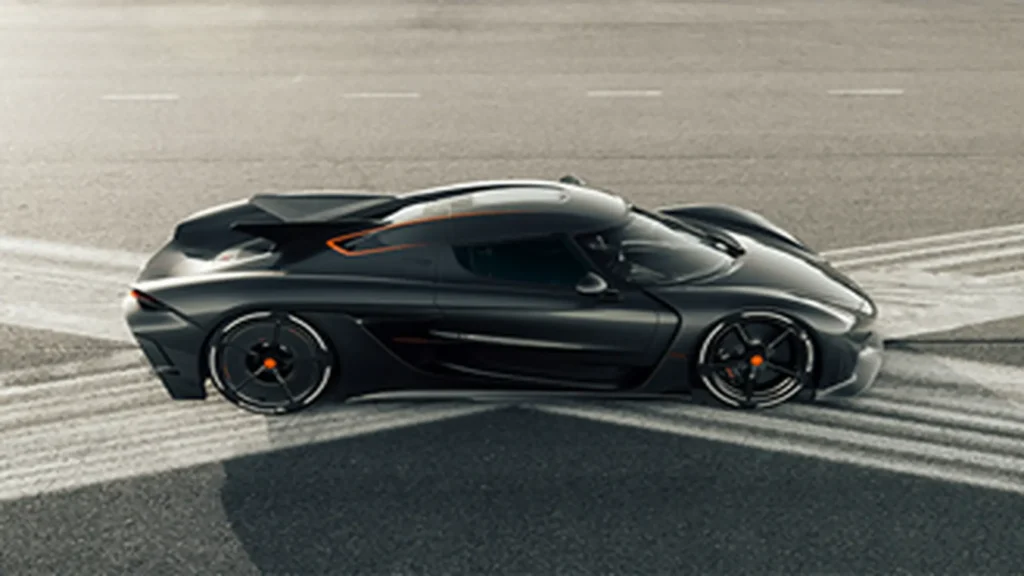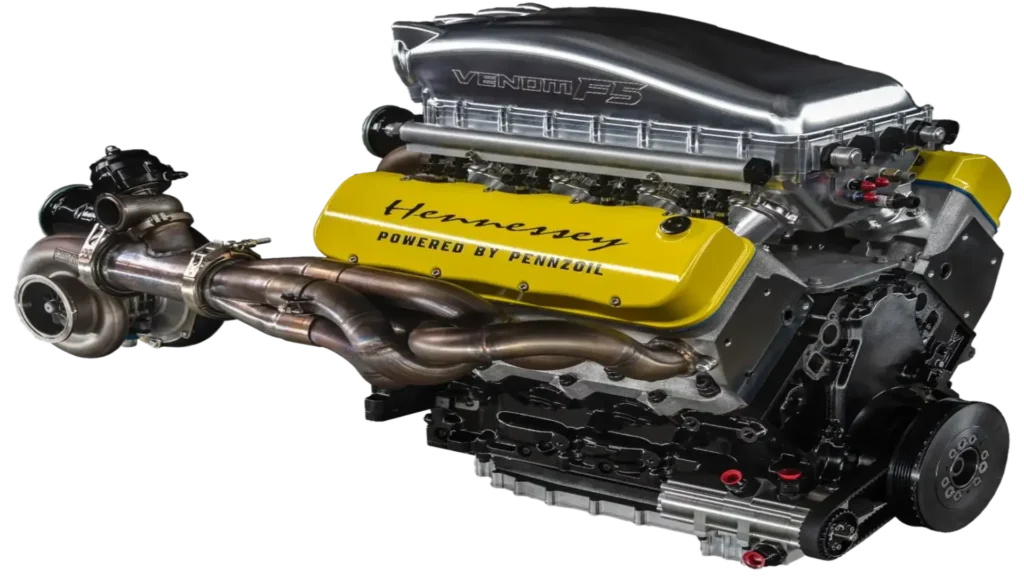Table of Contents
- Conversion of chemical energy into mechanical energy
- Aerodynamic control and drag reduction in hypercars
- Transmission and drivetrain for lossless power
- Chassis and structure where the energy is supported
- Auxiliary systems and braking at extreme speeds
- What is the fastest car in the world?
- Comparison of leading hypercars
- The future of mechanical engineering at extreme speed
- Conclusions
- References
In the automotive sector, the quest for extreme speeds in excess of 250 mph has led mechanical engineering to reimagine how to convert, transmit and control mechanical energy within the automotive industry. These vehicles, whose engineering is closer to aviation than to traditional automotive, condense decades of advances in thermodynamics, fluid dynamics, strength of materials and structural design.
Mechanical energy in this sense is the combination of kinetic energy – generated by motion – and potential energy – associated with the position or configuration of the system. When designing the fastest car in the world, the aim is to maximize speed and performance, pushing the limits of automotive engineering and striving for perfection in aerodynamics, engine power and technology.
Conversion of chemical energy into mechanical energy
In the world’s fastest internal combustion cars, such as the Jesko Absolut or the Venom F5, energy originates from the chemical content of fuels such as gasoline or high-octane biofuels. This energy is transformed by controlled internal combustion in high-pressure chambers, generating a sudden expansion of gases that press on the pistons. This force is transmitted through the crankshaft as mechanical rotational energy.
In modern hypercars, this process is optimized by means of:
- Advanced supercharging, with twin or quad turbochargers that multiply the amount of air available for combustion, raising the energy density of the cycle.
- Heat-resistant materials, such as forged pistons, titanium connecting rods and special alloy cylinder heads, which sustain internal pressures above 1 500 psi (≈103 bar).
- High-pressure direct injection systems, which ensure precise fuel atomization and fast, homogeneous and efficient combustion.
In contrast, vehicles such as the Rimac Nevera and the Aspark Owl represent the electric route. In these cases, the electrical energy stored in high-voltage batteries is converted directly into motion through electric motors with no intermediate moving parts, achieving a conversion efficiency of more than 90 %.
Aerodynamic control and drag reduction in hypercars
At speeds above 190 mph, the air becomes an invisible containment that requires overcoming enormous resistances. Aerodynamic drag (Fd) is calculated with the formula:
Fd = ½ · ρ · v² · Cd · A
where:
- Fd: Drag force (drag)
- ρ: Air density
- v: Relative speed
- Cd: Drag coefficient
- A: Reference area (m²)
The fastest cars in the world employ solutions such as:
- Teardrop profile designs, which allow laminar flow to be maintained around the body and minimize boundary layer separation.
- Extended tails, as on the Bugatti Chiron Super Sport 300+, which reduce induced drag and prolong aerodynamic flow.
- Wheel covers and skirts, present on the Koenigsegg Jesko Absolut, to close critical turbulence zones and improve the Cd coefficient to record values (0.278).
One of the main enemies of efficiency at high speeds is the drag coefficient, which represents the resistance offered by the air to the movement of the vehicle. The higher it is, the more energy is needed to move forward.
But in addition to drag, there is another aerodynamic challenge: unintentional lift. At high speed, the air pressure under the vehicle can generate an effect known as lift, which tends to lift the car off the ground, reducing its grip.
To counteract this phenomenon, aerodynamic elements are used such as:
- Rear diffusers and flat bottoms, which generate downforce without significantly increasing drag.
- Adaptive suspensions, which modify the chassis height in real time to maintain aerodynamic stability.
Transmission and drivetrain for lossless power
The mechanical energy generated by the engine must be transferred to the wheels without interruption. This is where mechanical engineering meets its greatest challenge: designing ultra-fast transmissions that do not interrupt the power flow.
A paradigmatic example is Koenigsegg’s Light Speed Transmission (LST). This 9-speed system with multiple clutches allows gear changes in less than 30 milliseconds, with no loss of torque or powertrain disengagement. Its internal logic allows direct shifting between non-consecutive gears by means of multiple overlapping clutches, allowing the next gear to be preselected and engaged instantaneously without completely disengaging the previous gear, ensuring continuous conversion of engine energy into useful kinetic energy.

In electric vehicles, such as the Rimac Nevera; each wheel is independently driven by an electric motor, allowing real-time vector control without a mechanical differential, with minimal energy loss, and torque distribution is electronically controlled by torque vectoring algorithms.
Additionally, the powertrain must contain reinforced axles, limited slip differentials and structures designed to withstand torque peaks of up to 2,000 Nm or more.
Chassis and structure where the energy is supported
The chassis not only supports the body; in hypercars it is a highly engineered structure designed to channel forces, absorb impacts and maintain geometric integrity under aerodynamic stress.
Modern structural solutions
- Carbon fiber monocoques, as in the Venom F5 or Chiron, offer superior torsional stiffness with low weight.
- Structural sandwich with aluminum or composite honeycomb core combine strength with crash energy absorption capability.
- Active or semi-active suspension systems, such as Koenigsegg’s Triplex, which absorb vibrations and control dynamic balance at 310 mph.
In all cases, the chassis design and materials used must be able to tolerate lateral and longitudinal accelerations equivalent to 1.5-2.0 g (i.e., between 48.2 and 64.3 ft/s²) without compromising structural stability. The unit “g” represents the standard gravitational acceleration (~32.17 ft/s²).
El chasis no solo sostiene la carrocería; en los hipercoches es una estructura de alta ingeniería diseñada para canalizar fuerzas, absorber impactos y mantener la integridad geométrica bajo presión aerodinámica.
Auxiliary systems and braking at extreme speeds
In modern hypercars, designed to exceed 250 or even 310 mph, braking and dynamic control systems are as sophisticated as their powertrains. At these speeds, safe braking requires a comprehensive approach that combines thermal resistance, active aerodynamics and high-precision electronic control.
These systems feature redundant (fail-operational) architectures designed to prevent catastrophic failures at high speed. The entire assembly is calibrated to respond under conditions of:
- Extreme vibration
- Lateral and longitudinal dynamic loads.
- Sudden changes in adhesion.
High-performance braking at extreme temperatures
Vehicles such as the Bugatti Chiron Super Sport 300+ or the Koenigsegg Jesko Absolut are equipped with carbon-ceramic disc brakes, capable of operating at more than 1,000 °C without losing effectiveness. These brakes stand out for:
- Excellent heat dissipation with no loss of effectiveness at high temperatures.
- Reduced weight, which decreases unsprung mass
- High resistance to fading under heavy use
Tires and traction
Tires must withstand enormous centrifugal forces and maintain grip on asphalt at extreme speeds. For this reason, manufacturers such as Michelin or Pirelli design exclusive compounds for these models, capable of operating at over 300 mph without disintegrating or losing structural integrity.
It is important to differentiate these tires from those used on Land Speed Record (LSR) vehicles such as the ThrustSSC or Bloodhound LSR, which often employ solid metal or airless forged aluminum wheels designed to withstand extreme centrifugal forces and contact with unprepared surfaces at speeds exceeding 620 mph, where a conventional tire would instantly disintegrate.
Electronic control and redundancy
The emergency brake, hydraulic assistance and torque distribution and stability systems (ABS, ESP, vectoring) operate through reinforced electronic modules that process information in real time. The entire assembly is calibrated to respond under conditions of:
- Extreme vibration.
- Lateral and longitudinal dynamic loads.
- Sudden changes in adhesión.
What is the fastest car in the world?
The title of the fastest car in the world goes to the Koenigsegg Jesko Absolut, followed by other hypercars that exceed 250 mph with high-performance engineering.
Koenigsegg Jesko Absolut
- It has achieved an estimated speed of 330 mph, backed by more than 3 000 hours of CFD simulation and 5 000 hours of technical development, aiming for a type airfoil that minimizes turbulence at the rear, mimicking smooth airflow around a wing or an ideal airfoil.
- Its coefficient of drag (Cd) is a mere 0.278, one of the lowest recorded in a high-speed production car.
- It equips a 5.0 L twin-turbo V8 engine, which delivers 1 600 hp using E85 fuel. It uses the world’s lightest flat-plane V8 crankshaft at only 27.5 lbs, which allows for higher engine speed and more aggressive response, reaching a limit of 8500 rpm.
- Its innovative 9-speed Light Speed Transmission (LST) allows virtually instantaneous shifts (in less than 30 ms) with no power interruption, ensuring continuous conversion of energy into useful motion.

Koenigsegg Jesko Absolut is the fastest car in the world, (Source: koenigsegg).
Hennessey Venom F5
- All-new architecture, ultra-lightweight carbon fiber monocoque chassis (~3043 lbs dry) and a 6.6 L “Fury” twin-turbo “Fury” V8 generating 1 817 hp (or 2 031 hp in Evolution package). Its design focuses on lightness and massive torque delivery at high RPM. Reaching a maximum speed of 8 000 rpm.
- The maximum speed reached is 270.49 mph on track, with a stated goal of exceeding 311 mph.
- Incorporates aerodynamic tuning, adaptive suspension and extensive testing at facilities such as the NASA track, where its aerodynamic development was validated. Its drag coefficient (Cd) is 0.39, a remarkable figure for a vehicle of this power and front section. Adjusting downforce and stability at 300 mph represents a continuous challenge.

Bugatti Chiron Super Sport 300+
- Integrates an 8.0 L quad-turbo W16 engine, developing 1 578 hp and 1 600 Nm of torque, exceeded 304.773 mph.
- Aerodynamics are optimized with a “long tail”, specially designed to maintain a laminar airflow over the bodywork at extreme speeds.
- This configuration reduces lift-induced drag and improves the A × Cd ratio, which was instrumental in breaking the 300 mph barrier.
The following video shows the acceleration test, of the Chiron Super Sport displaying its quad-turbo W-16 and optimized aerodynamics, highlighting its dynamic performance in both power and control. This clip visually complements the concepts of aerodynamic flow, power-to-weight ratio and high-efficiency braking that we discussed in the article.

SSC Tuatara
- Powered by a 5.9 L twin-turbo V8, with estimated maximum power of 1 750 hp, the SSC Tuatara reached a verified top speed of 295.0 mph.
- Although there were initial controversies over GPS accuracy, its performance was later officially certified.
- It has an aggressive aerodynamically designed bodywork, focused on minimizing drag and maximizing airflow penetration.
High-performance electric models
- Rimac Nevera: electric supercar with a top speed of 258 mph and 1 914 hp. uses advanced torque vectoring, electronically distributing power to each wheel with millimeter precision.
- Aspark Owl: reaches 272.6 mph due to a power output of close to 2 000 hp.
Both models demonstrate the enormous potential of electric propulsion to reach extreme speeds. Their advantage lies in instant torque delivery and independent traction control per wheel. In addition, the direct conversion of electrical energy into mechanical energy is more efficient than internal combustion engines, especially in terms of acceleration and response.
Comparison of leading hypercars
In the following table, the characteristics of the most outstanding models at present are presented.
| Model | Engine / Power | Speed | Transmission |
| Koenigsegg Jesko Absolut | V8 5 L twin-turbo / 1 600 hp | 330 mph (estimated, not validated) | LST 9V multiclutch |
| Hennessey Venom F5 | V8 6. 6 L / 1 817-2 031 hp | 311+ mph (manufacturer’s target, not validated) | Sequential 7-speed |
| Bugatti Chiron Super Sport 300+ | W16 quad-turbo / ~1 578 hp | 304.773 mph (verified) | 7-speed automatic |
| SSC Tuatara | V8 twin-turbo / ~1 750 hp | 295.0 mph (verified) | 7-speed sequential |
| Aspark Owl | Electric / ~2 000 hp | 272.6 mph (verified ) | Independent electric motors on each wheel (no gearbox) |
| Rimac Nevera | Electric / 1 914 hp | 258 mph (verified) |
While the Bugatti Chiron Super Sport 300+ has exceeded 304.773 mph with official verification, the Koenigsegg Jesko Absolut (based on CFD simulations) and the Hennessey Venom F5 (according to internal manufacturer’s figures) have declared capabilities in excess of 310 mph. However, they are still pending public and independent validation. This distinction, reflected in the comparison table, adds transparency and technical rigor to the analysis.
The future of mechanical engineering at extreme speed
The development of the world’s fastest cars is driving a new era of advanced mechanical engineering, where energy efficiency, structural adaptability and control intelligence are key.
- Combining CFD with artificial intelligence enables more accurate simulations. Together with topological optimization and 3D printing, this technical synergy results in lighter and stronger components.
- Topological optimization, combined with structural 3D printing, shapes lightweight and strong components that make the most of mechanical energy.
- High-voltage electrification, coupled with regenerative hybrid systems, redefines power delivery with greater efficiency and dynamic control.
- Contactless transmissions and predictive algorithms are projected to manage energy flow in real time, eliminating mechanical losses.
- The use of intelligent and adaptive materials will enable structures that respond dynamically to speed, load and track conditions, improving safety and performance.
Conclusions
In the elite of automotive performance, developing the world’s fastest car involves the precise integration of multiple disciplines of mechanical engineering. It’s not just about achieving speed, but harmonizing aerodynamics, drivetrain, brakes and electronic control to convert energy into motion without loss.
Every advance-from composite monocoques to real-time torque vectoring-makes these hypercars platforms for technological validation. Although their access is limited, their technology marks the future of transportation. These vehicles not only break records, they redefine what is possible in efficiency, control and automotive design.
References
- Koenigsegg Automotive AB. (s. f.). Jesko Absolut. Retrieved from https://www.koenigsegg.com/model/jesko-absolut
- Carwow. (s. f.). Fastest cars in the world. Retrieved from https://www.carwow.co.uk/blog/fastest-cars-in-the-worl
- Auto Express. (s. f.). Fastest road cars 2025: Top speed and 0–60mph performance. Retrieved from https://www.autoexpress.co.uk/best/fastest-road-car


